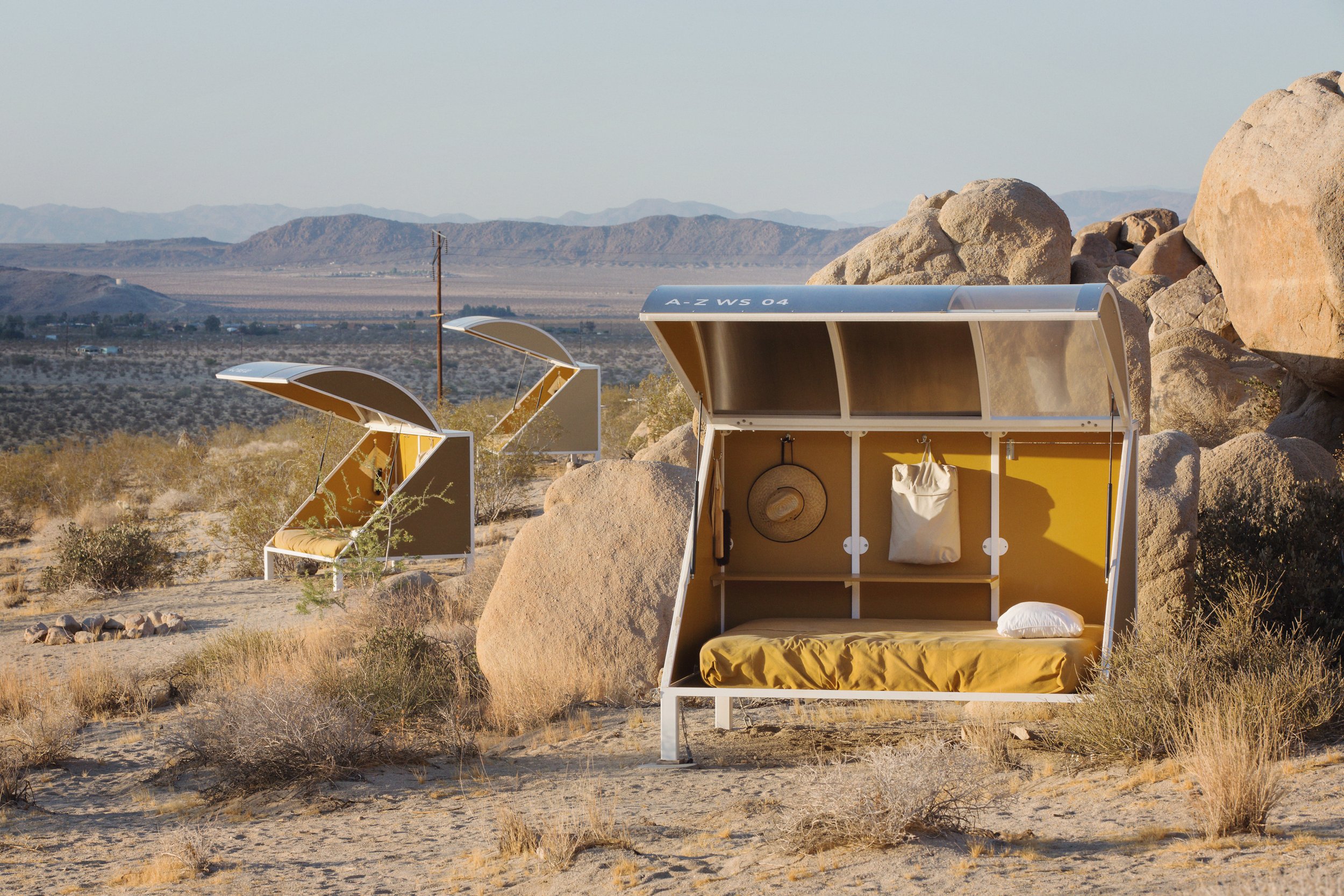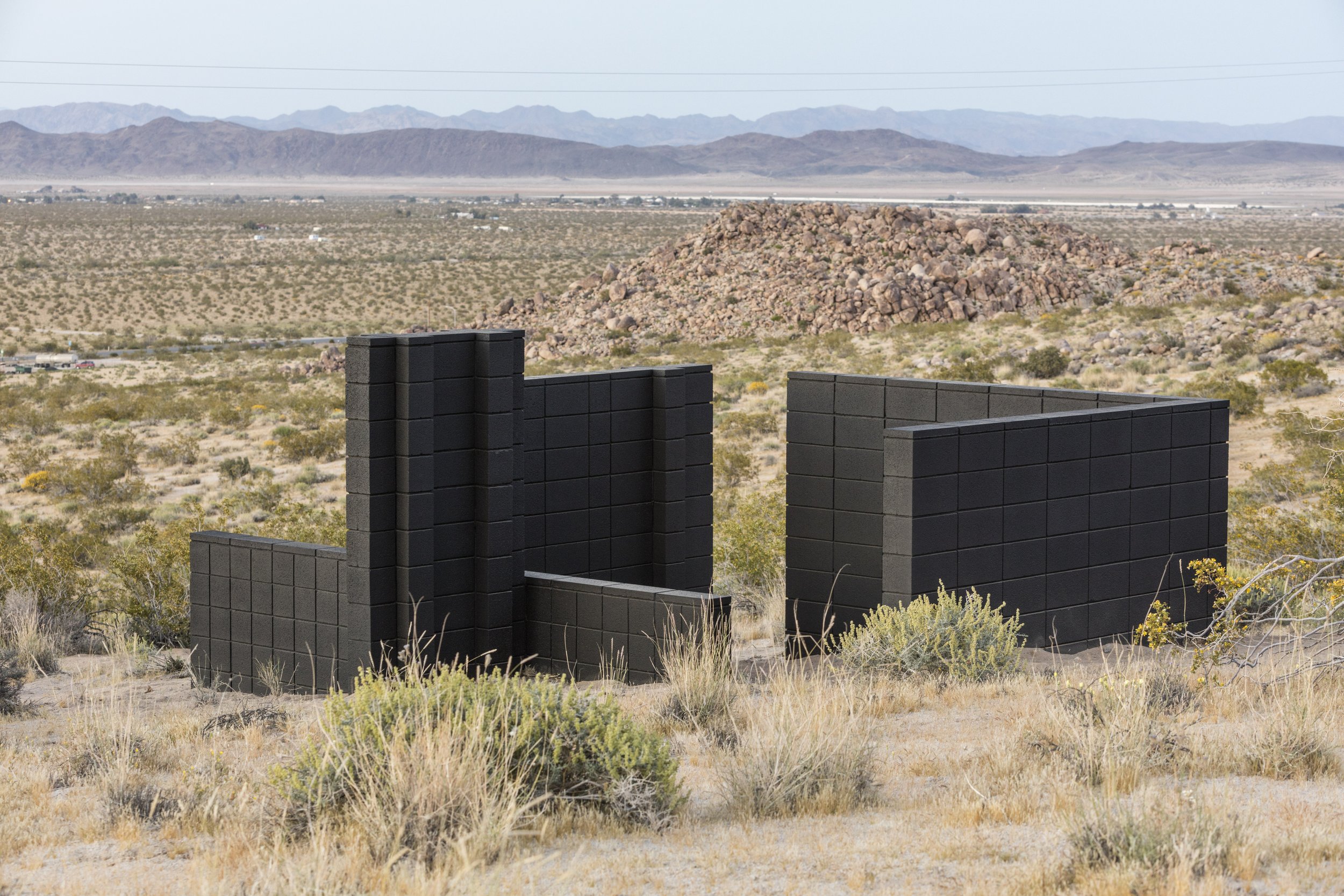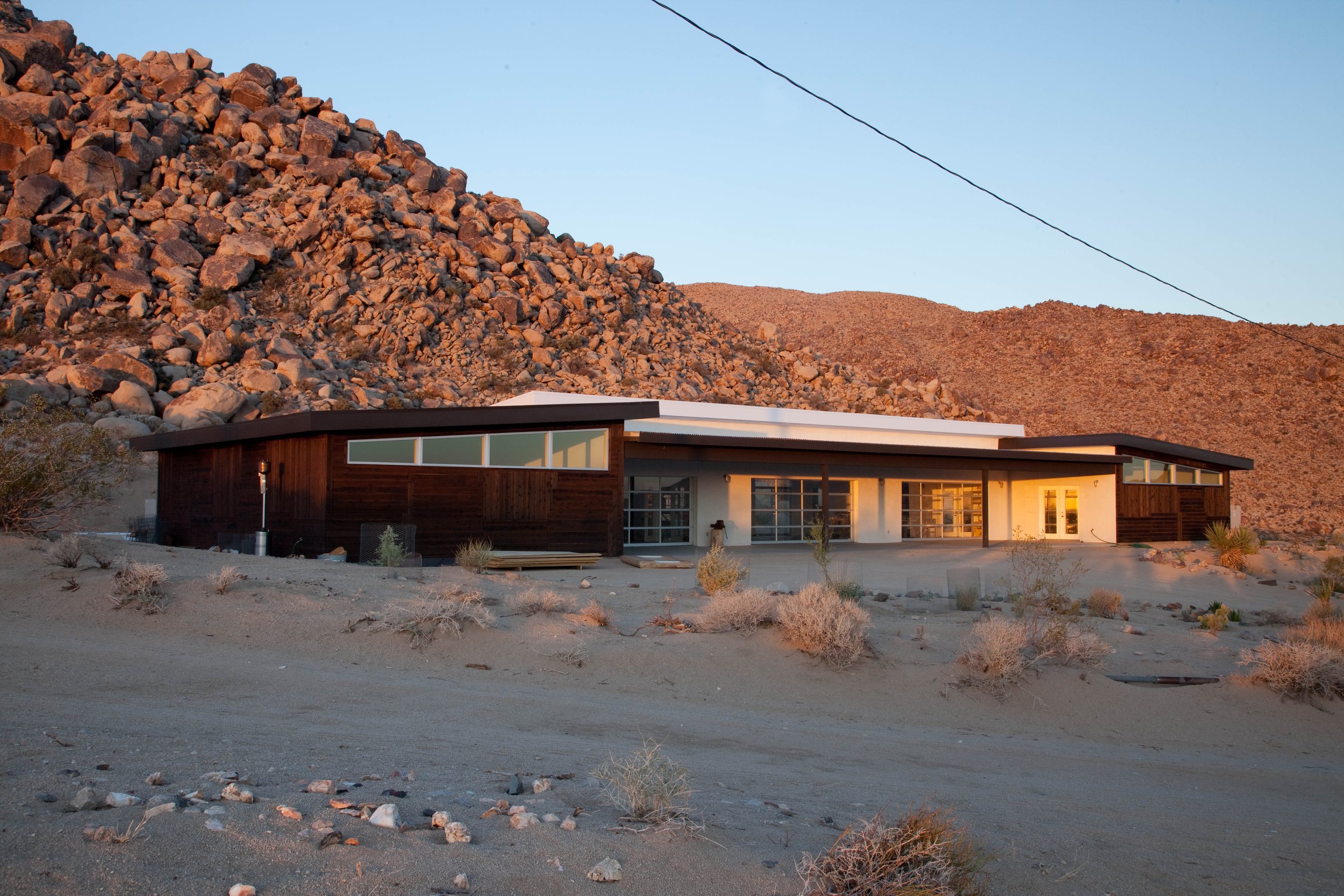Andrea Zittel’s A-Z West Is A Laboratory For The Future
Andrea Zittel
A-Z Wagon Station customized by Giovanni Jance
2003
Powder-coated steel, MDF, aluminum, Lexan, cushions, iPod Nano, headphones, solar iPod chargers
91 x 82 x 57 inches
© Andrea Zittel, Courtesy the artist and Regen Projects, Los Angeles
text by Oliver Kupper
The desert is an unforgiving, but magnetic landscape. Agnes Pelton, Georgia O'Keeffe, Walter De Maria, Michael Heizer, Robert Smithson, Nancy Holt, and many more artists have all been drawn to the desert of the American West. Its barrenness, its potential, its raw heat, its solitude, and liquid mirages all provide a contemplative and hot combination of all the right ecosystemic ingredients for artists to experiment and conceive of cosmic ideas. Even the word desert is alluring: it comes from the ecclesiastical Latin root desertum, which means a “forsaken” or “abandoned” place. Lately, though, the desert has become less a quirk of America’s multifold topography and more a frightening, but beautiful prelude to an arid, lifeless future on Earth.
Andrea Zittel fits into the historical canon of artists lured to these forsaken and abandoned landscapes—abandoned by time and most botanic nature—but she isn’t so much a land artist as she is an artist of the land. Like the late artist and sculptor Noah Purifoy before her, Zittel is not a visitor—she is a guardian of the desert’s inexplicable potential as a testing ground for future civilizations who might live in a world that is going through a rapid process of what geologists call desertification. According to scientists, over a third of the world is going through this process, and every year 120,000 square kilometers of land turns into an actual desert. Studies show that if global carbon emissions aren’t curbed, much of the Earth will become a desert by 2050.
Andrea Zittel
Prototype for A-Z Warm Chamber & Prototype for A-Z Cooling Chamber
1993
Wood, steel, paint, heater and light
Each 84 x 32 x 50 inches
© Andrea Zittel, Courtesy the artist and Regen Projects, Los Angeles
Since the year 2000, Zittel’s A-Z West—an artwork and testing site spanning seventy acres in the California high desert on the edge of Joshua Tree National Park—has become a template for day-to-day life on a scorched planet. Tucked into the alluvial floodplains of an ancient shallow sea that is now the dust-colored panorama of the Mojave Desert, A-Z West is a new frontier—a homestead—and an “Institute of Investigative Living.” Textiles, home furniture, clothing, food and art-making materials are all made on site. A regenerating field, consisting of numerous steel panels “harvest” recycled paper to pulp to be used for fabrication techniques in the harsh climate. Zittel also lives and works on A-Z.
Tucked against the rocky bajadas and billion-year-old metamorphic boulders dotted with creosote bush and greasewood, Zittel’s instantly recognizable and portable A-Z Wagon Stations become architecture for future moveable lifestyles. In thirty years, climate refugees (people displaced by natural disasters, droughts, and water shortages) could reach into the billions. These wagons could be the answer to overcrowded refugee camps and allow for more dignified and aesthetically amplified transient domesticity. Plus, their compact size allows these structures to bypass building codes, and they are easy to collapse and transport to the next impermanent residence.
The architecture feels utopian, but practical and reminiscent of Jean Prouvé's famous 1944 demountable houses, which were a direct response to Europe’s bomb-battered cities during the Second World War. The need to move quickly, efficiently, and affordably was tantamount to survival. In our human-altered, anthropogenic age, the bomb can come from anywhere and without even a warning or a whistle. Packing up and heading to higher ground may be our only chance. While sequestering yourself in the desert may seem counterintuitive in a warming world, it is in this counterintuitive thinking that makes A-Z West such a brilliant experiment in living off the grid. In the high desert, there are no rising tides or swollen tributaries. In fact, an interesting geomorphic idiosyncrasy of this part of this desert is that the basins have no outlets, so any rainfall collected quickly evaporates in a symbolic disappearing act.
In some ways, the ground beneath A-Z Test Sites could be called a thirty-million-year-old experiment in extreme topography as a result of intensifying fluctuations in global climates, volcanic activity, and tectonic shifting within what is called The Basin and Range Province. This physiographic region covers much of the inland Western United States, and explains the strange landscapes of these high desert terrains. And deep within the subterrestial geography of the Mojave Desert is a foreshadowing of what may happen to our own living world. Fossils of prehistoric Paleozoic sea life are still trapped in the dolomite and limestone buried beneath the dust. When the oceans receded and eventually vanished completely, elements like manganese and iron were oxidized by bacteria over thousands of years and created something called desert varnish, which coats many of the rocks and boulders in brilliant hues of brown and black.
Andrea Zittel
A-Z Regenerating Field
2002
Galvanized steel frame, galvanized steel post, vacuum formed styrene trays
Dimensions variable
© Andrea Zittel, Courtesy the artist and Regen Projects, Los Angeles
The desert is unforgiving, but Zittel has learned that it is not so much a physical place, as it is a psychological place—a philosophic place. Her Planar Pavilions are an ode and monument to place-based thinking: ten black-painted bricks in various formations, like dancer’s poses, become metaphysical meeting points of the mind. Evocative of the late-aughts housing crash, these planar creations appear upon first impression almost like unfinished foundations to some forgotten suburban housing development lost in late-capitalism’s rapacious daydreams. No stranger than the landscape, these sculptures do not interrupt, nor do they hamper the beauty of the vistas—they serve as friendly borders to A-Z’s experimental community.
Andrea Zittel
How to live?
2013
Polyacrylic on marine grade plywood panel with steel frame
93 1/4 x 180 inches
© Andrea Zittel, Courtesy the artist and Regen Projects, Los Angeles
One of Zittel’s oft-asked questions, “How To Live?,” is answered with A-Z West, especially if we’re imagining a world past the ecological thresholds that scientists have put in place for our natural world. A species that created fire who is now burning the world to the ground must now live with its self-made consequences, and Andrea Zittel has created a radical reimagining of how to live, work, play, regenerate—and repeat—in our collapsing biosphere. This is the beauty of human originality, modernism, and innovation. If you can survive here, you can survive anywhere.









